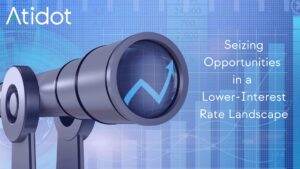Predictive analytics and artificial intelligence (AI) are the most transformative developments in the history of life and annuity products, with early adapters poised to achieve major strategic advantages.
Predictive analytics can enable us to understand better the complex causal relationships that affect the performance of our business in real-time, thereby enabling exponential strategic advantages. In other words, we have the predictive insights in time to act on them, enabling the business to be proactive rather than reactive.
Personalization in the life insurance industry
I own a life insurance policy from one of the largest life insurers. The closest they have come to recommend a product is to send a list of all the products they offer and suggest that I spend time discussing my needs with the agent.
I also own automobile and homeowners insurance from one of the largest P&C writers. Every few years, they recommended that I buy $100,000 of life insurance. But this is not personalized! In the 21st Century, people expect smart services. The likes of Amazon and Google have learned to maximize engagement with their platforms by interacting with their user bases dynamically. What will it take for our industry to catch up to those born in the digital age?
Perhaps experts have studied the issue and determined that additional predictive analytics is unable to help our industry. However, I believe this is simply not true.
Suppose that Company A has poor lapse experience and wants to determine what it can do to improve its persistence. They can call everyone who lapses, find out their issues, and try to convince them to reinstate. At best, this would be post-hoc and expensive.
They could call in-force policyholders instead before lapsation happens, but it would be hit or miss on whether they are calling customers at risk, and hence an expensive proposition with dubious results. Worse yet, some policyholders who otherwise would not have lapsed may get the idea from these calls to lapse their policies. So, how can predictive analytics help Company A improve its retention?
Knowledge is power

Predictive analytics – without human intervention – has demonstrated that some data, such as the premium payment date – previously thought of by many as important only for administrative purposes – can be significant predictors of lapsation risk.
Lower and middle-income customers who pay their premiums shortly after they receive their paycheck when they have sufficient funds in their checking account are more likely to keep their policies in force. Those customers whose premium due dates fall a long time after they receive their paychecks – by which time they may have spent their most recent paycheck – are more likely to lapse.
Armed with this knowledge and other discoveries generated by predictive analytics, insurers and producers can know which policyholders to call and when as well as why these customers are at high risk.
We produce more refined policyholder segments that have been newly identified and are using more data and extended study periods to set credible lapse rate assumptions with lower variability.
The lapse assumptions are more accurate than those produced previously, and financial models and results will have lower variability. It also provides a launchpad for reducing lapses in the future. Whether this support has strong incremental effects or exponential strategic advantages depends on the insurer’s implementation.
Using automation to gain exponential strategic advantages
Automating predictive analytics would enable quick analysis of additional potentially predictive factors that arise as well as real-time information on the impact of behavioral, economic, market and other environmental changes. The insurer can then be proactive in improving policyholder retention and understanding its emerging lapse experience, providing exponential strategic advantages.
Returning to the sales process, let us think about how much valuable information we collect that we do not use. For example, when a policyholder notifies us of a change in address, do we treat it purely as an administrative matter, or do we analyze it to see whether the move suggests changed economic or family circumstances and hence an increased need for coverage?
Given that many people simply do not buy what a needs analysis says they should buy, perhaps we can start by letting people know how much coverage others in similar circumstances have. This may not solve the entire gap in life insurance coverage, but it is a message that resonates with customers (as Amazon has demonstrated), and it would be a door opener for us to talk to customers and prospects about their needs.
We, in the life and annuity spaces, have built our businesses by collecting and effectively analyzing huge volumes of data. Let us continue to innovate and use the new tools now available to us to revitalize – and indeed revolutionize – our businesses!



 min read
min read 
 min read
min read

 min read
min read



